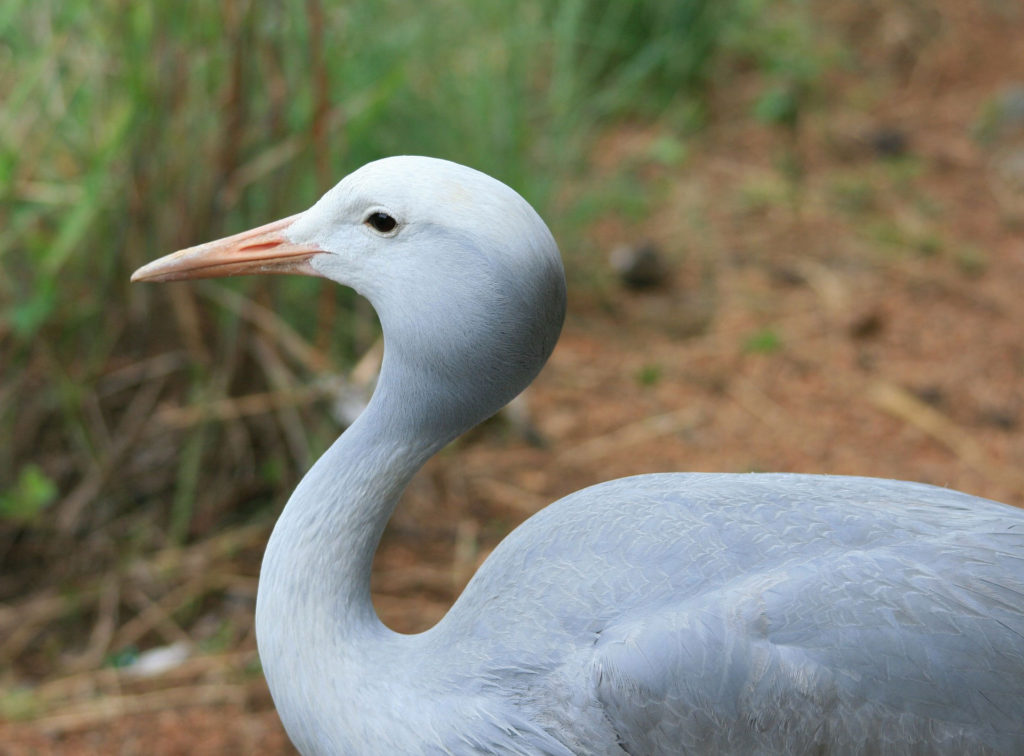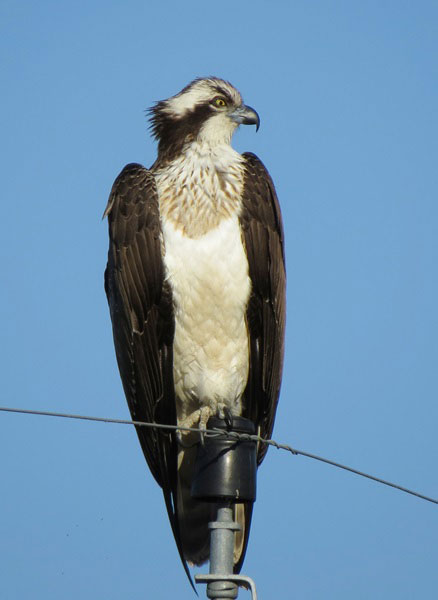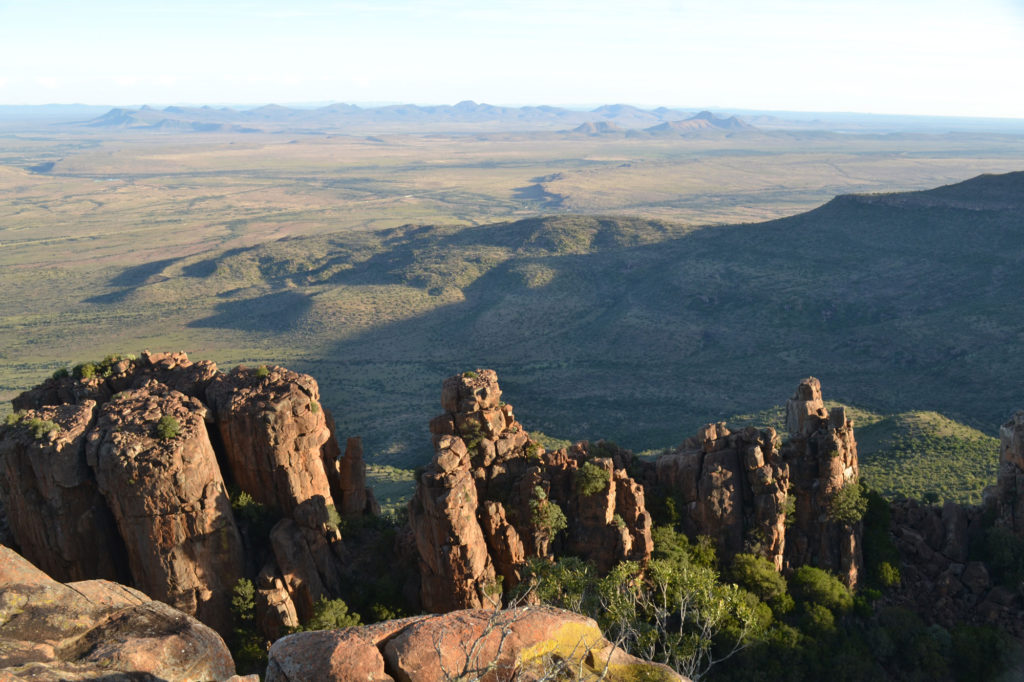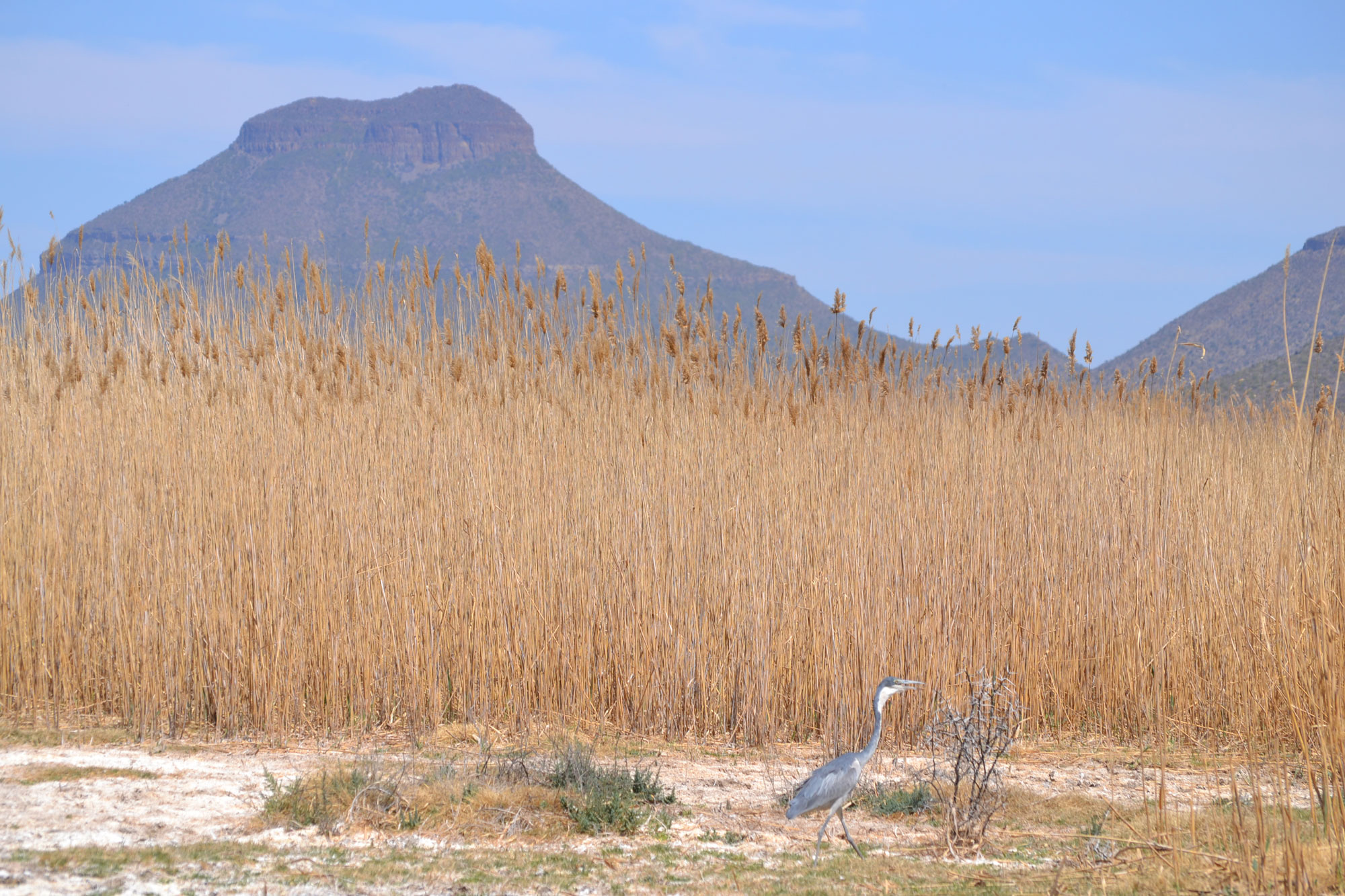Aside from its other-worldly views and abundant game, Camdeboo National Park is also a birder’s paradise. The park boasts a bird list featuring over 250 species within the boundaries of its 19,022 hectares
The rich birdlife is the result of the wide range of habitats found in the park, including semi-arid to arid shrublands, succulent thicket and dwarf shrubland. There are over 50 endemic and near-endemic birds in the region – a significantly high number compared to other natural regions in the country.
“Camdeboo offers a wide variety of habitats, including vachellia woodland, grasslands, open-scrub Karoo, hills, mountains, and shore areas which hosts a wide variety of birds,” says Alan Collett, chairperson of the Graaff-Reinet Bird Club.

Blue Crane
The diverse park supports many globally threatened species, such as blue crane, kori bustard, Ludwig’s bustard and black harrier. Verreauxs’ eagle and Karoo korhaan, regionally threatened species, also occur in the park.
A number of rare species have also previously been spotted in the park, including Temminck’s courser and black-chested snake eagle, according to Collett. Montagu’s harrier, African grass owl, western osprey and Abdim’s stork have also been spotted in the park before.

Western Osprey
Rock kestrel, diederik cuckoo, brown-hooded kingfisher, lesser honeyguide, neddicky and titbabbler are all frequently spotted in the park’s game viewing area. Namaqua warbler, southern grey tit and fairy flycatcher can be seen within the riverine woodland, while pale chanting goshawks are common throughout the park.

Brown-hooded kingfisher
Collett recommends visiting Nqweba Dam and the Valley of Desolation, or heading out along the 7km Koedoeskloof 4×4 trail for good bird sightings. Birds associated with Nama-Karoo are clearly visible on the first section of Koedoeskloof. A wetland plant community is also found within the water fluctuation area of the Nqweba dam, which attracts many water birds such as flamingos and Baillon’s crake. The autumn thunderstorms and rains bring good sightings for eager birders, while spring brings sightings of migrant waders.

The Valley of Desolation
“My most significant sighting in the park was of a black-winged pratincole during a coordinated water bird count at Nqweba Dam in January,” says Collett. “It is only the third time ever that it has been recorded in the Eastern Cape.”
Next time you’re in the park, don’t forget to pack your binoculars and pick up a birding list at reception.

